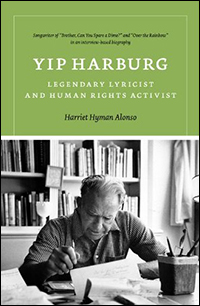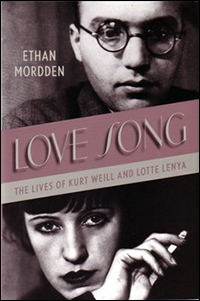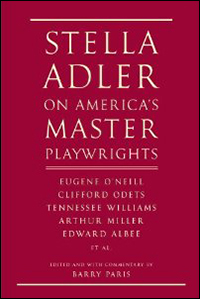
*
In a day when some long-established unions are under siege — not so much by employers, oddly enough, but by politicians — it is heartening to report that Actors' Equity Association is happily celebrating its centennial year. Equity was an unlikely new union, in 1913; here were men and women who had by and large never lifted a hammer, clerked an emporium, nor entered a factory. Under what farfetched notion could they be considered organized labor?
But protection for actors was sorely needed in a day when you weren't paid for rehearsal, your job could at any moment be terminated under the nebulous "satisfaction clause" — as in "I am not satisfied with your work so you're fired" — and it was not uncommon to find yourself stranded halfway across the country when your show closed and management disappeared. (Management, somehow, usually had enough money to buy themselves railway fare.) Thus began Equity, which has protected actors and stage managers ever since. And not without some rough times along the way.
Equity has celebrated the anniversary by — what else? — commissioning a book. Performance of the Century: 100 Years of Actors' Equity Association and the Rise of Professional American Theater by Robert Simonson [Applause] does, indeed, recount the conditions that led to the founding of the union and what came after. This makes quite an interesting story, mind you, peopled with all sorts of famous names and odd circumstances.
Those of us at all familiar with the history are aware there were initially two unions, Actors' Equity and Chorus Equity. Simonson reveals the reason: while chorus members strongly supported the strike of 1919 — and those chorus girls were highly effective at luring press coverage to the picket lines — dancers "weren't necessarily considered proper actors by the profession." Thus, a separate club with a separate door. We also learn one of the reasons for the longtime affection between Broadway professionals and the former management of the Algonquin Hotel; during the strike, proprietor Frank Case provided Equity's press agents with a set of rooms — complete with free room service. But talk of unions and such matters does not necessarily make for an entertaining book. Which is where the notion of "Performance of the Century" comes in. It is impossible, of course, for any committee to vote on the best performances of 100 years unless the committee members are age 115 and up. Simonson, though, has assembled a fair assortment of "great" performances, although it is unfortunately skewed toward today. (Nathan Lane, Matthew Broderick and Anna Deavere Smith, yes; Lunt/Fontanne, Kit Cornell, Julie Harris, no. And who, in a survey of a few dozen great performances, would choose to select Miyoshi Umeki?)
Even so, these great performances are for the most part well selected and well described. "Performance of the Century" is not only about union and stars; Simonson — the former editor of Playbill.com who still contributes news and feature stories to the site, and to Playbill magazine — touches on myriad aspects. There are chapters on theatres across the land, USO troupes, stage management, civil rights, the blacklist era, and more. At the same time, the book is filled with relevant sidebars from performers famous and not. All of it is capped by hundreds of photos — well-selected ones, not the usual shots generally used in books of this sort — and even a Hirschfeld/Norkin-like caricature cover by Justin "Squiggs" Robertson. All told, this is a smart-looking and smart-reading book, with Simonson doing an especially impressive job.
Passionate about theatre books? See what the Playbill Store has on its shelves.
 |
||
| Cover art |
Alonso has fashioned her "interview-based biography" around interviews with and lectures by Harburg, who died in 1981 at the age of 84. This does, indeed, give us loads of authentic flavor; however, it makes the biographical aspects suspect. Harburg was a raconteur, certainly; but after years and years of retelling and refashioning the same anecdotes, his spiels sometimes turned more fanciful than factual. Harburg was also somewhat hypersensitive in some areas, with perhaps some stubborn grudges; as a blacklist victim, too, he might well have had philosophical points to make and scores to settle.
The biographer is constrained by the scope of her subject's favored stories. Harburg not unnaturally tended to concentrate on his successes, triumphs, and things that made him look good; this sort of chatter is fine for lectures and dinner table conversations, but does not lend itself to biography.
Some subjects are missing altogether. Can Harburg really have had nothing to say about his final musical Darling of the Day, a disastrously-produced failure he wrote with Jule Styne which nevertheless contains some of the lyricist's most delicious work? Bloomer Girl, the 1944 Civil War-set musical, was a major hit. All that we get here, though, is an interesting-but-familiar anecdotal complaint from one of Agnes de Mille's autobiographies. What was Harburg's position on this episode, in which de Mille claims he tried to censor her work but she triumphantly outsmarted him? All we know, here, is what Alonso has borrowed from de Mille.
We do get a sense of the nature of the man, at least from his viewpoint, and some entertaining anecdotes. But consider "Yip Harburg" as a supplement to — rather than a replacement for — Harold Meyerson and Ernie Harburg's 1993 "Who Put the Rainbow in The Wizard of Oz?" Passionate about theatre books? See what the Playbill Store has on its shelves.
 |
||
| Cover art |
This gives Mordden the opportunity to discuss not only a decidedly unconventional marriage of two artists but a different world altogether, which is to say Germany before and between the wars. The focus is, understandably, on the two intermingled lives, which the author does in an interesting manner. Be advised, though, that readers expecting a comprehensive Morddenesque discussion of the eight Broadway musicals of Kurt Weill won't find it here. What you get is the "Love Song."
*
 |
||
| Cover art |
For example, take Adler's 16-page analysis of the first act park bench scene between Lorna and Joe in Golden Boy. This exchange is familiar at the moment, as the play is presently being revived — and stunningly so — by Lincoln Center Theater at the Belasco. Adler, whose slightly younger brother Luther created the role of Joe Bonaparte in 1937, explains the scene — and the play, and the world of the play — line by line. Read "Stella Adler on America's Master Playwrights" and learn. *
 |
||
| Cover art |
(Steven Suskin is author of "Show Tunes" as well as "The Sound of Broadway Music: A Book of Orchestrators and Orchestrations," now available in paperback, "Second Act Trouble" and the "Opening Night on Broadway" books. He also pens Playbill.com's On the Record and The DVD Shelf columns. He can be reached at [email protected].)
*
Passionate about theatre books? See what the Playbill Store has on its shelves.










